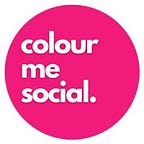4 Ways to Follow Your Audience, Not Marketing Trends
The key to any successful marketing strategy, nay, any successful business, is a clear understanding of your target audience.
We know this isn’t news to anyone, but we think it’s worth remembering when you’re trying to get more leads, customers and referrals in a fast-paced, trend-driven environment.
Don’t get us wrong. Following marketing trends can get your company’s name out there and position you as a progressive organisation. However, unless you conscientiously integrate these trends into an established and well-researched marketing strategy, it’s unlikely they will lead to significant growth.
Although new popular platforms, ideas and techniques may attract attention and raise short-term revenue, ultimately, following a trend means following someone else’s lead. Doing this can cause you to stray from your own brand identity and values, and move you further away from your own customers needs.
Remember, customers can see right through phonies, so jumping onto TikTok because it’s ‘what everyone else is doing and not because you have a genuine potential to develop leads on the platform could make your company look foolish and out of touch. It could also dent your reputation and cause customers to lose trust in your organisation.
While recent years have brought marketers a load of new and innovative ways to reach out to and connect with their customers, there is not a ‘one size fits all’ approach to marketing, and whilst it’s easy to be susceptible to new trends — not least because they appear a dime a dozen in the marketing world — we urge you to begin with your audience, not the trends. Once you know what they need, you’ll have a clearer perspective on which of those novel fads (if any!) could actually play a relevant role in your efforts to boost conversions and improve customer loyalty.
In this blog, we’ll take things back to the essentials of brilliant marketing, dismissing the fads for a deep-dive look at 4 techniques for effectively listening to and learning from your audience, proving that you should be led by your audience, not overhyped marketing trends.
Do a Deep Dive on Your Analytics
When setting out to gain a greater understanding of your audience, begin by reviewing the current data you have. This includes all analyses your company has conducted about your customers since you’ve been in business, such as focus groups and figures you can gather from your marketing outputs, including website traffic, social media data, email open rates and click-throughs. Use this invaluable data to pinpoint where your customers are engaging the most and to inform the rest of your marketing activities.
This gives you a starting point to work from when learning about your audience on a deeper level — you already have some understanding of the real pain points and challenges they experience and what they need from your product or service.
From there, consider the other types of audience-related information you’re missing and need to obtain.
Ask Your Audience
Surveys are an effective way to listen to both current customers and a prospective audience; it’s the most direct way to understand their needs, as it comes directly from the source. Surveys allow you to continually improve and amend your services in line with your customers’ expectations, increasing retention rates.
Try Social Listening
To really get to know your audience and find out what they are saying about your industry and your brand online, try social listening. It gives you a useful context to see where your brand lies amongst competitors and will go a long way to inform your marketing strategy.
Social listening is not about looking at numbers of followers or likes but about how audiences react to your content and brand and reading their mood. Whether it’s positive or negative, knowing when and how your audience reacts to your brand online is crucial to truly understand your customers.
Create Buyer Personas
Buyer personas are semi-fictional representations of your ideal customers based on data and research. They can help you focus your time on qualified prospects and guide product development to suit the needs of your target customers.
When done well, buyer personas can be really helpful. They can make it easier for you to tailor your content, messaging, and services to meet the specific needs of your target audience.
You can build your buyer personas through research, surveys and interviews. They usually consist of information about a prospects age, job, salary and education — now this information can prove useful. However, the best buyer personas include more detail about what actually matters.
What are the tasks they struggle with day to day?
Where are their frustrations?
What work do they love doing?
The answers to these questions are a lot more helpful to marketers, so try to build them into your buyer personas.
As copywriter Gary Bencivenga said: “Emotions are the fire of human motivation, the combustible force that secretly drives most decisions to buy. When your marketing harnesses those forces correctly, you will generate explosive increases in response.”
Listen to Your Audience, Not Trends
Getting to know your audience isn’t always a simple process, but it’s a crucial one. Conducting this work and doing it often will ensure you know what resonates with your audience to create the content and products, and services that your buyer personas and target customers want to buy.
Having a strong understanding of your potential customers will help you convert them into long-term, paying customers. So, start working through these steps to getting to know your audience better and begin building a customer-led strategy rather than letting trends direct your decision making.
